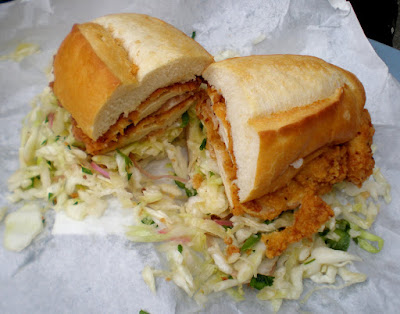
Restaurant Club was in full swing with our trip to Healdsburg. Our dining adventure and reservations were at Dry Creek Kitchen – the Charlie Palmer signature restaurant in California’s wine county. He creates a menu that celebrates the bounty of the land, utilizing artesian products and extraordinary wines. The recipes are uncomplicated yet elegantly seasonal and inspired by the local wine country vibe.
Our reservation was for 12:15pm and we were seated almost immediately. We chose to enjoy the interior of the restaurant versus dining al fresco. We had the best waiter and he even inquired if we had any food allergies – which is going above and beyond. A young man came around with a basket of three different kinds of bread – we all chose to enjoy one of each. The butter was to die for – handmade at Dry Creek Kitchen and a hint of olive oil was added – simply divine.
We began with a glass of Anaba Coriol from Sonoma Valley which is a Rhone blend of 48% Roussanne, 30% Viognier, 12% Marsanne and 10% Granache Blanc. The wine is aged for eleven months in French oak barrels of which 20% are new French oak. This wine has a floral, tea like aroma with hints of honey and pear. It is a medium bodied blend with notes of peach, citrus, a bit of spice and a subtle minerality was an extremely bright and satisfying wine. This is one incredible wine - a must try!
We chose our starters from the wonderful menu and selected the Chilled Asparagus Soup with spicy shrimp salad with espelette oil. The baby shrimp were sweet and tender and paired beautifully with the vibrant color and flavor of the asparagus. Next was the Grilled Chicken Paillard Salad with petite watercress, toasted hazelnuts, slow baked grapes and red verjus gastrique. This salad was off the chart delicious. The chicken was extremely thin and layered the bottom of the plate. It was topped with quenelles of fluffy blue cheese and the grapes, nuts and greens with a bit of radicchio. Each and every bite was heaven on a fork and our taste buds.
We each selected a different entrée, so we could nibble and taste a variety of flavors. We began with Yukon Gold Potato Gnocchi with cauliflower mousseline, pickled purple cauliflower and house made ricotta salata. It was not a heavy laden sauced pasta dish, which enhanced the flavors and they popped off the plate. The mousseline was perfect, just wished there was a bit more on the plate to enjoy.
Is there nothing better these days than a slider? We ordered the American Kobe Mini Burgers on toasted brioche, with black winter truffle aioli and crispy Yukon gold potatoes. The burger is prepared on the rare side but you can order however you prefer it. It just melted in your mouth and embodied so many flavors. Lastly we had the Fresh Pappardelle Pasta with house made chorizo, manila clams and fennel confit. The chorizo was full of flavor and melted in your mouth.
You are probably thinking – how do they have room for dessert? We did not think we would but when we pursued the menu, two items stood out. We shared the Coffee Crème Caramel with buttermilk beignets and cinnamon whipped cream. This little decadent dessert was absolutely supreme. The tiny deep fried buttermilk beignets literally melted in your mouth and left you craving more. It was rich, creamy and luscious with delicate flavors of coffee, cream and cinnamon that blended together magically.
Along side, we enjoyed Valrhona Chocolate Bundino with Guinness ice cream, salted caramel ganache and house made pretzels. The Guinness ice cream was a stand out and complimented the entire dessert. Hard to believe the pretzels were hand made, but they were divine and crunchy with just the right hint of salt.
We enjoyed a divine lunch, stimulating conversation, terrific weather, wonderful shopping and great people watching. We reminisced over the restaurants that we have experienced so far and we all agreed that Dry Creek Kitchen was ranked toward the top. Next time it is my turn to pick the dining destination – where should we go – any ideas?
Dry Creek Kitchen
Hotel Healdsburg
317 Healdsburg Avenue
Healdsburg, CA 95448
Tel: 707.431.0330


















